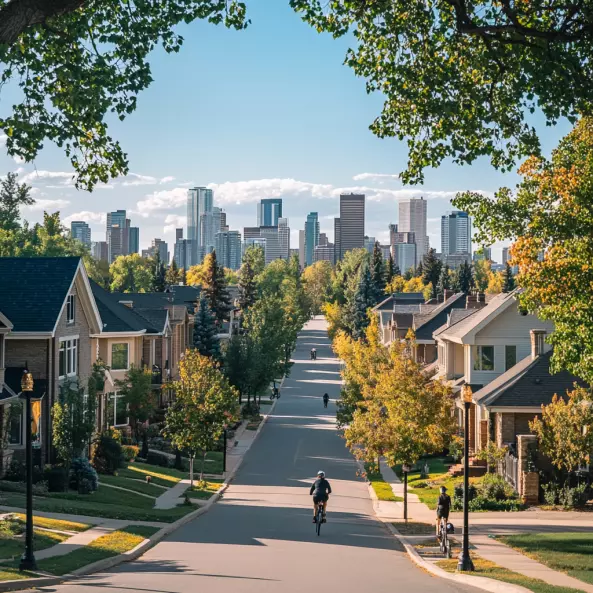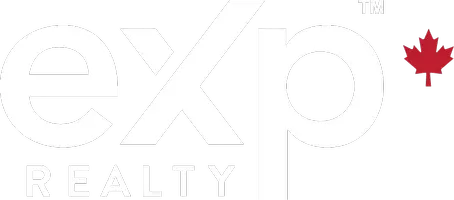Bylaw Breakdown: Building a Bright Future in Edmonton's Real Estate

Introduction to Edmonton's New Zoning Bylaws
Edmonton, a bustling city in Canada, has recently undergone significant changes in its zoning bylaws. These changes aim to streamline the development process, protect historical sites, and ensure a seamless transition for all properties.
Background and Importance
Previous Zoning Bylaws
The previous bylaws served the city for many years but were not without their challenges. As Edmonton grew and evolved, so did the need for a more flexible and modern set of bylaws.
Need for Change
With the city's expansion and the increasing complexity of urban development, there was a pressing need to revise the old bylaws. The new regulations aim to address these challenges head-on.
Key Features of the New Bylaws
Development Rights
One of the guiding principles of the new bylaws is that properties should experience little to no loss of development rights. This ensures that property owners and developers have clarity and confidence in their projects.
Zone Transitioning
Properties will transition to the closest equivalent zone under the new bylaws, minimizing non-conforming uses and developments.
Infrastructure and Service Upgrades
The new bylaws anticipate that new infrastructure and service upgrades will not be necessary due to the rezoning transition. However, requirements will be reviewed on a case-by-case basis during the application stages.
Protection of Historic Resources
Edmonton values its history, and the new bylaws ensure the protection of Municipal Historic Resources and Heritage Areas.
Hottest NEW Listings in Edmonton - JUST LISTED
Impact on Residents
Taxation and Assessment
The rezoning aligns closely with taxation and assessment timelines, ensuring a smooth transition for property owners. Moreover, the majority of properties will not see an immediate impact on their tax assessment values.
Direct Control Zones
These zones are out of scope for the new bylaws, meaning they won't transition to the closest equivalent zone.
Conclusion
Edmonton's new zoning bylaws mark a significant step forward in the city's urban development journey. By addressing the challenges of the past and anticipating the needs of the future, Edmonton is poised for sustainable and harmonious growth.
FAQs
- What prompted the change in zoning bylaws?
- The city's growth and the complexities of urban development necessitated a change.
- Will my property lose any development rights?
- The aim is for properties to experience little to no loss of development rights.
- How will the new bylaws affect historical sites?
- They ensure the protection of Municipal Historic Resources and Heritage Areas.
- Are there any anticipated infrastructure upgrades due to the new bylaws?
- New infrastructure upgrades are not anticipated, but requirements will be reviewed case-by-case.
- What happens to Direct Control Zones under the new bylaws?
- They are out of scope and won't transition to the closest equivalent zone.
Results of the Vote
The City of Edmonton is undergoing significant changes with the introduction of new zoning bylaws. These bylaws are set to redefine the city's landscape, affecting everything from residential areas to commercial and industrial zones. In this article, we will dive into the details of the new City of Edmonton Zoning Bylaws, explaining their purpose, key changes, and the implications they carry.
Understanding Zoning Bylaws
Zoning bylaws are an integral part of urban planning. They dictate how land within a city can be used and developed. By determining where residential, commercial, and industrial activities are permitted, zoning bylaws play a crucial role in shaping the character and function of a city.
Purpose of the New Bylaws
The new zoning bylaws in Edmonton have been crafted with several key objectives in mind. These include promoting sustainable development, accommodating population growth, and enhancing the overall quality of life for residents. Additionally, the bylaws aim to simplify and modernize existing regulations.
Key Changes in the Zoning Bylaws
One of the most significant aspects of the new bylaws is the changes they bring. These changes touch on various aspects of city planning and development, and they will have far-reaching effects.
Residential Zoning Updates
Under the residential zoning category, several updates have been made:
Single-Family Homes
The bylaws now include provisions for single-family homes that encourage energy-efficient construction and emphasize green building practices. These changes align with the city's commitment to sustainability.
Multi-Family Dwellings
Multi-family dwellings, such as apartment buildings and townhouses, are subject to new regulations that address density, design, and accessibility. The goal is to create vibrant and livable communities.
Commercial Zoning Updates
Commercial areas within the city are also affected by the new zoning bylaws. These changes impact businesses and the overall urban environment.
Industrial Zoning Updates
Industrial zones are not left untouched. The bylaws introduce measures to modernize these areas, making them more adaptable to contemporary industries.
Mixed-Use Zoning
The concept of mixed-use zoning is gaining prominence in the new bylaws. This approach encourages the integration of residential, commercial, and recreational spaces within the same development, fostering a sense of community and reducing the need for extensive commuting.
Zone Equivalencies
Zone equivalencies are introduced to simplify zoning and development processes. They allow for more flexibility while maintaining the overall intent of the bylaws.
Community Engagement
Throughout the development of these bylaws, the city has actively engaged with the community to gather feedback and ensure that the regulations align with the needs and aspirations of Edmontonians.
Impact on Real Estate
The real estate market in Edmonton will undoubtedly be influenced by these zoning bylaws. Changes in residential and commercial zoning may affect property values and investment opportunities.
Challenges and Concerns
While the new zoning bylaws bring about positive changes, they also raise challenges and concerns for property owners and developers. These include potential restrictions and increased compliance requirements.
City Council Approval
City council approval was a crucial step in the process of implementing these bylaws. Understanding how the bylaws passed through the council is important in appreciating their significance.
Implementation Timeline
Finally, the article will provide information on when these new zoning bylaws will come into effect, allowing residents and businesses to prepare accordingly.
Conclusion
In conclusion, the new City of Edmonton Zoning Bylaws represent a significant shift in urban planning and development. These changes aim to create a more sustainable, adaptable, and livable city for residents and businesses alike. While challenges may arise, the potential benefits are substantial, and Edmontonians can look forward to a transformed urban landscape.
FAQs
1. What are zoning bylaws?
2. How do zoning bylaws impact property values?
3. Can I still build a single-family home under the new bylaws?
4. What is the role of zone equivalencies?
5. How can I stay informed about the implementation timeline for the new zoning bylaws?
Resources Used
City of Edmonton - What We Heard Report: Zoning Bylaw Renewal Initiative Engagement
City of Edmonton - Zoning Bylaw Renewal Initiative Proposed Zone Equivalencies
City of Edmonton - City-wide Rezoning Guiding Principles
Categories
- All Blogs (22)
- downsizing (2)
- Eco-friendly Homes (1)
- Edmonton Bylaws (2)
- Events & Community News (4)
- First Time Home Buyer (4)
- Gardening & Landscaping (1)
- Home Buying Tips (14)
- Home Insurance (2)
- Home Selling Tips (6)
- How to (9)
- increase home value (8)
- Interior Design (1)
- Local Market Trends (8)
- market Influences (11)
- Market Update (9)
- Migration (2)
- Mortgage Info (2)
- Moving & Relocation (8)
- Neighborhood Profiles (4)
- Real Estate FAQs (15)
- Real Estate Investment (1)
- Real Estate Laws & Regulations (2)
- Technology in Real Estate (2)
Recent Posts










"My job is to find and attract mastery-based agents to the office, protect the culture, and make sure everyone is happy! "
